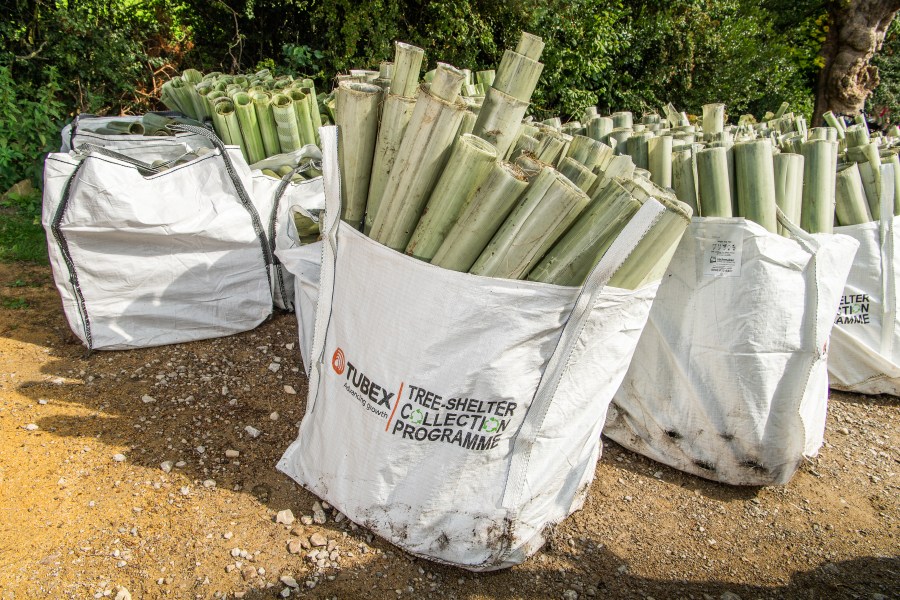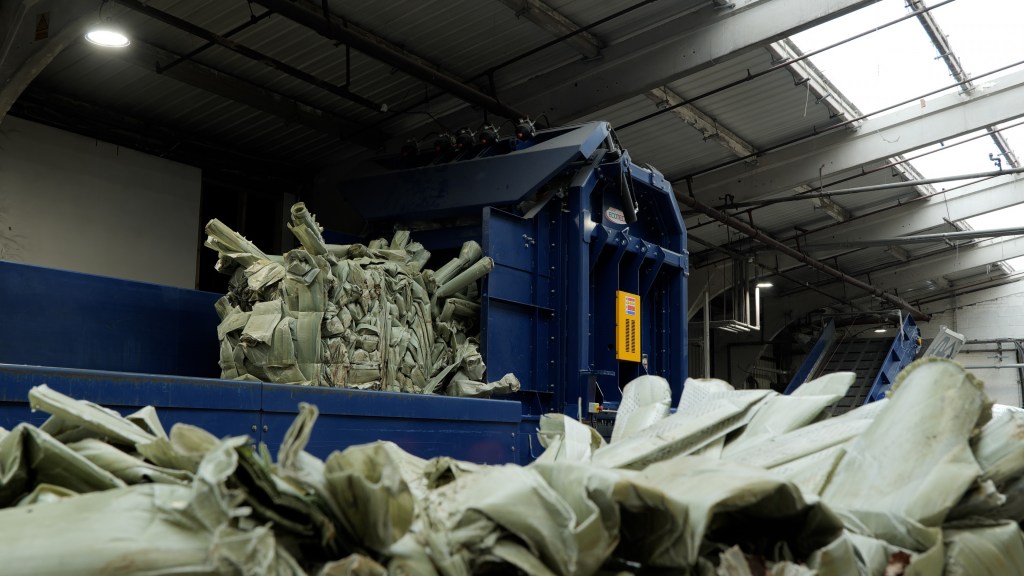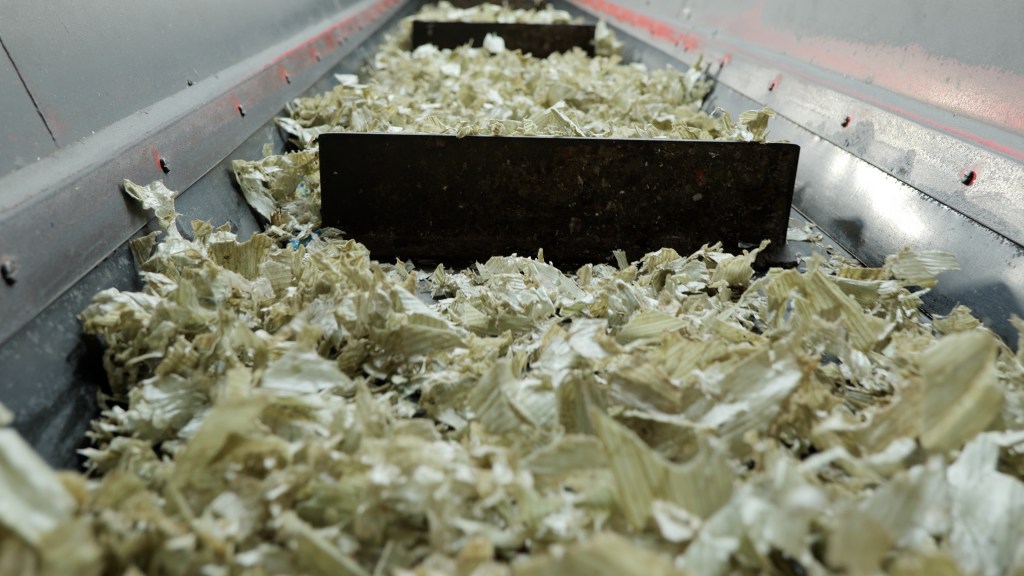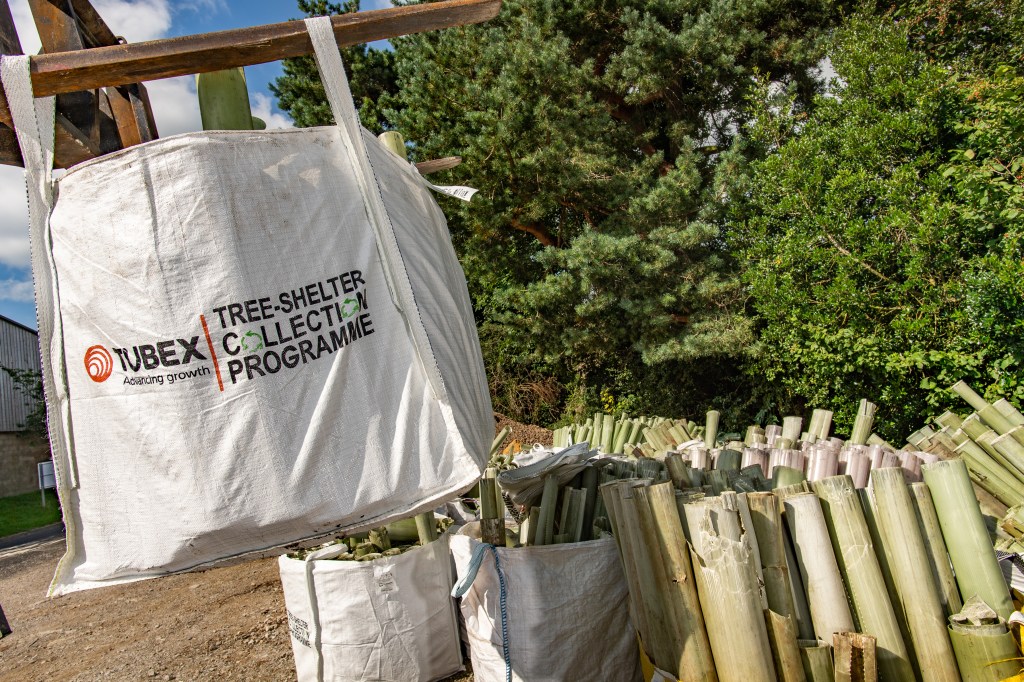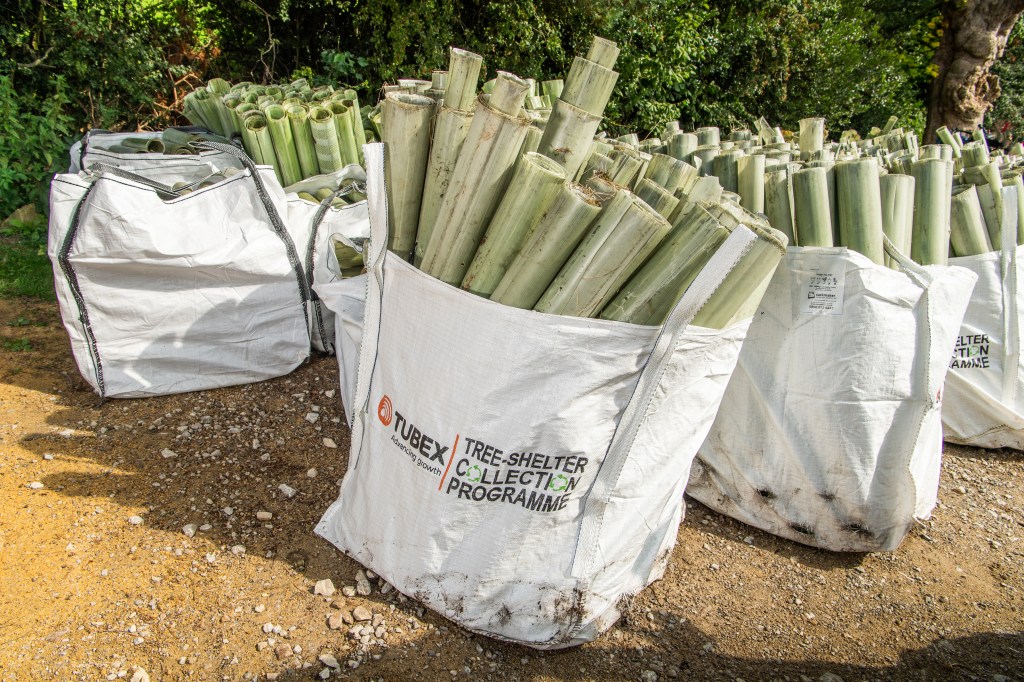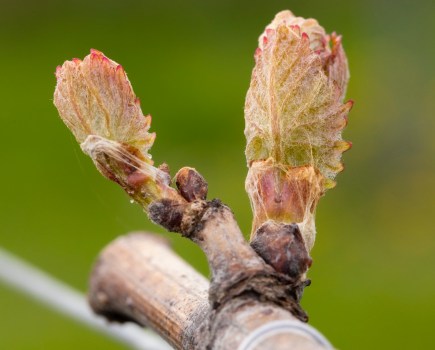Vine guards are vital for protecting young vines against animal browsing, herbicide spraying and mechanical operations. The establishment of young vines is greatly increased by the use of vine guards – survival rates are higher, growth rate is accelerated and labour costs are reduced. Guards promote a microclimate effect which helps to reduce evapotranspiration.
Types of vine guards
There are myriad vine guard products on the market with multiple unique selling points and varying effectiveness. It can be difficult to gauge which manufacturer’s claims are offering the best option environmentally, sustainably and financially. There are a vast amount of different materials being used, from sheep’s wool, wood pulp and numerous types of plastic, some that are now produced include recycled content.
Second-hand guards
Whilst it may appear cost effective to reuse guards or purchase second-hand ones, it is important to consider the possibility of fungal spores being transferred to younger, more susceptible vines. Additionally, the majority of guards are designed to start degrading after three or four seasons, especially those with UV protection. Therefore, the use of second-hand guards can be counterproductive.
Removing vine guards
It is recommended to keep the guards protecting the vine until the trunk is sufficiently established; removing them too soon leaves the vine vulnerable and could undo the previous years’ benefits.
The optimum time of year to remove vine guards is late spring, after tying down has been completed and the ground is firm enough to support tractor operations, (some form of trailer makes transporting the guards out of the vineyard a lot quicker and easier).
The physical removal of the guards will vary depending on the style. Many will require slitting with a pocketknife, allowing the guard to be carefully prised away from the vine without causing unnecessary damage to the trunk or new growth.
Recycling vine guards
Plastic shelters manufactured using recycled materials and recycled at end-of-life represent the most sustainable choice, as demonstrated by a recent Life Cycle Analysis (LCA) study presented at the Forest Working Plastics Group in November 2022. A major factor behind this is circularity in material use – one of the core foundations of sustainability in any industry. Whilst biodegradable shelters remain a viable sustainable option, they represent a single-use product.
“Our results clearly indicate that recycling shelters…yield lower carbon emissions than disposing of shelters according to the current UK waste treatment mix, which is a mix of landfill and incineration split.”1
Tubex invented the original tree shelter in 1985 and is continuously innovating across the forestry and agricultural industries. They are now leading the way with their Tree Shelter Collection and Recycling Scheme. With over 15 hubs across the UK in partnership with Yorkshire Dales Millennium Trust, it is possible to drop off any amount of guards to be recycled, completely free of charge. If it’s not feasible to transport the guards to a hub yourself, you can arrange a collection from your site for the cost of purchasing specific bulk collection bags from Tubex or one of their distributors.

Life after vine guard
What happens to the vine guards once they have been transported to a recycling hub?
“Once the tubes are collected, they are washed and shredded into flake, then repelletised and returned to Tubex where it is fed back into the manufacturing process of our Tubex recyclable products. Currently, all recyclable Tubex products contain an average of 35% recycled polymer.” [Tubex]
Alternative recycling possibilities include manufacturing bricks, park benches, furniture, etc. As all manufacturers work towards more effective, efficient, and circular processes, we will hopefully see a lot more ecological products introduced into our vineyards.
At VineWorks, we work with our clients to ensure their vineyards are both financially and environmentally sustainable. That is why our team of viticulture experts are always looking for ways to achieve the best outcome for our customers one vine at a time.

